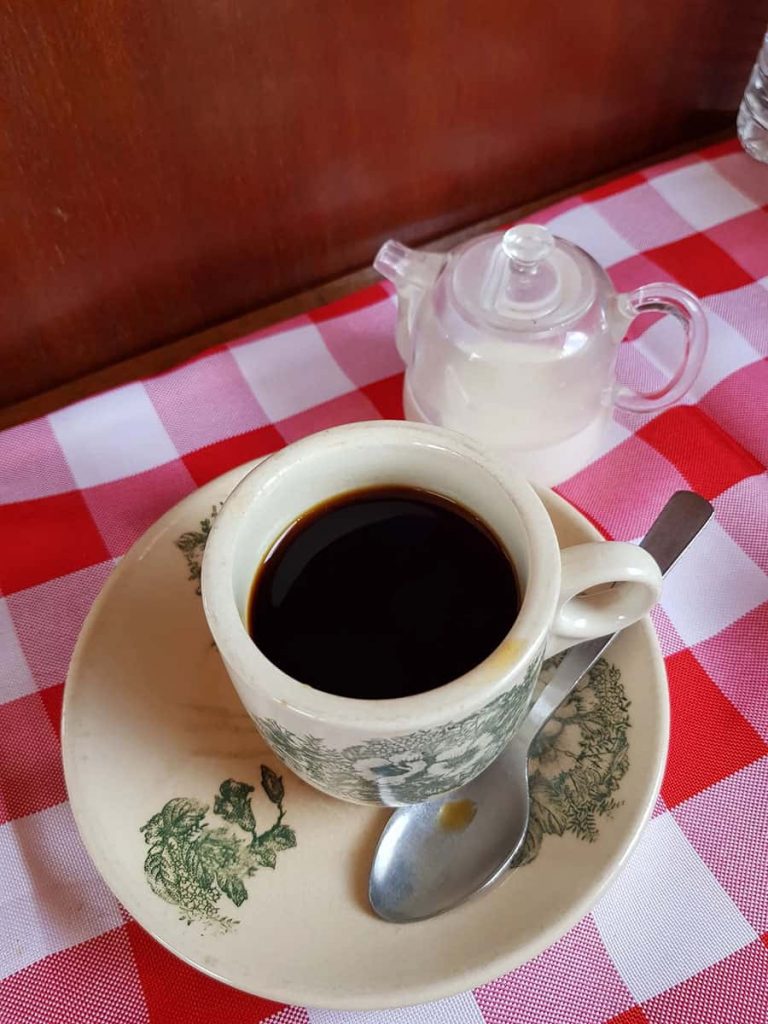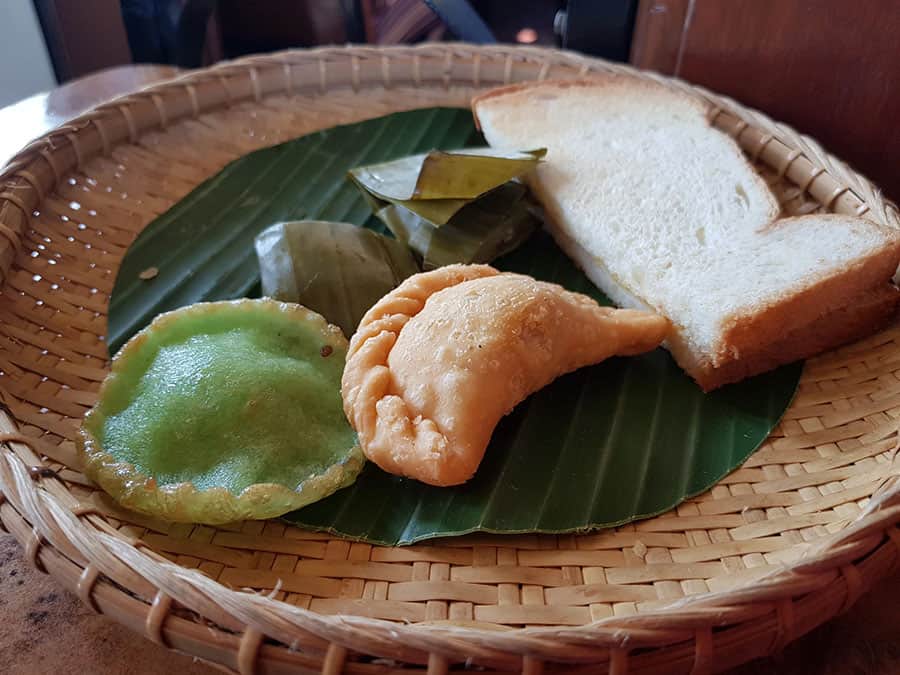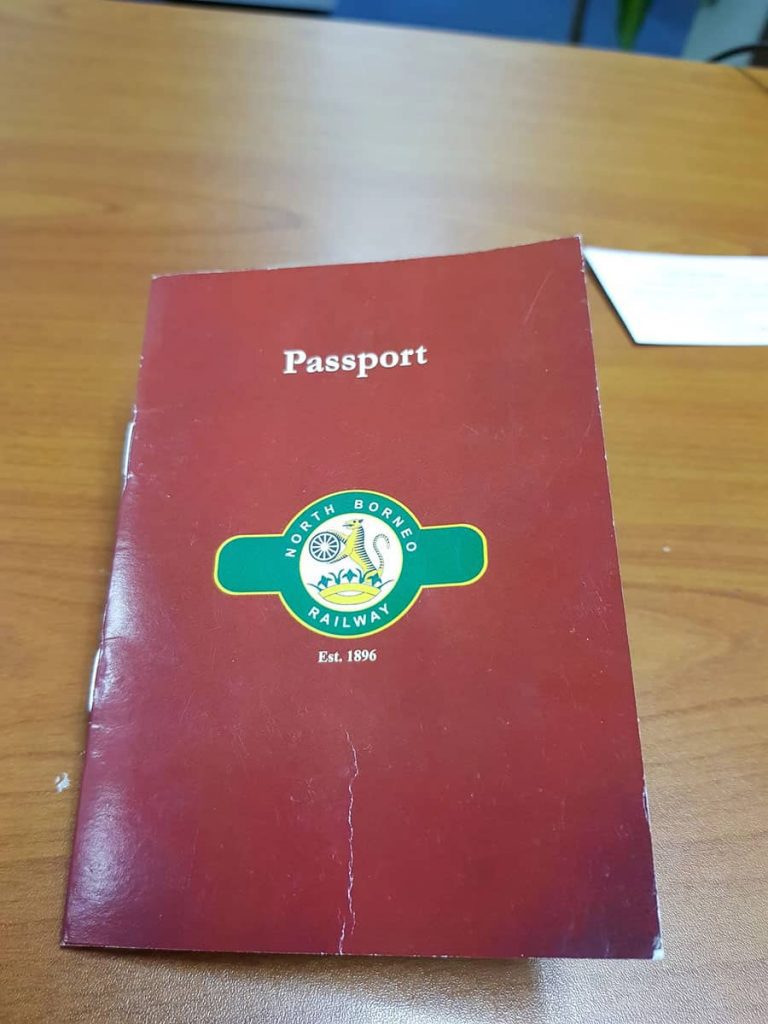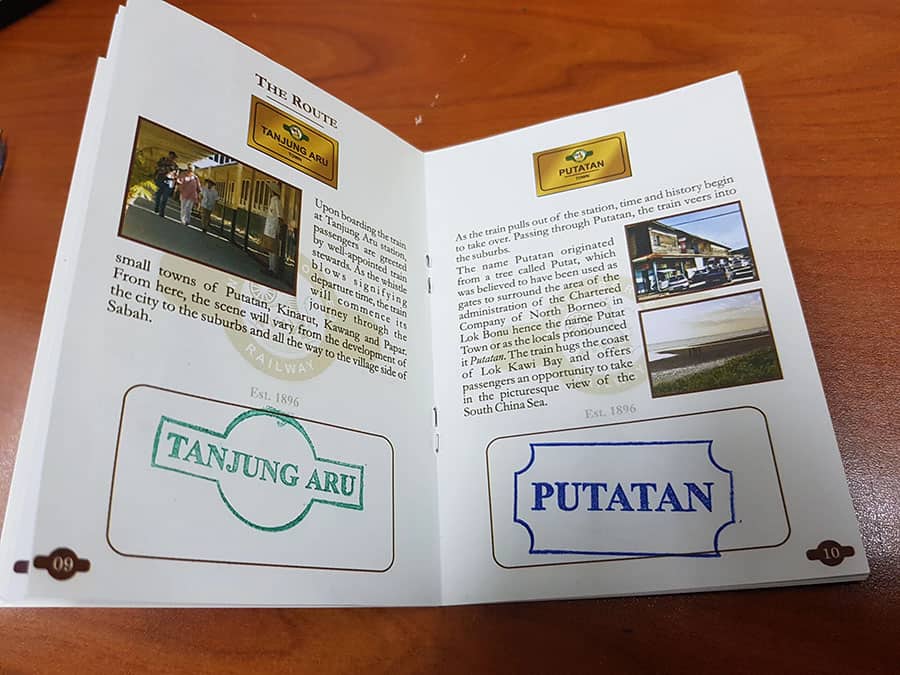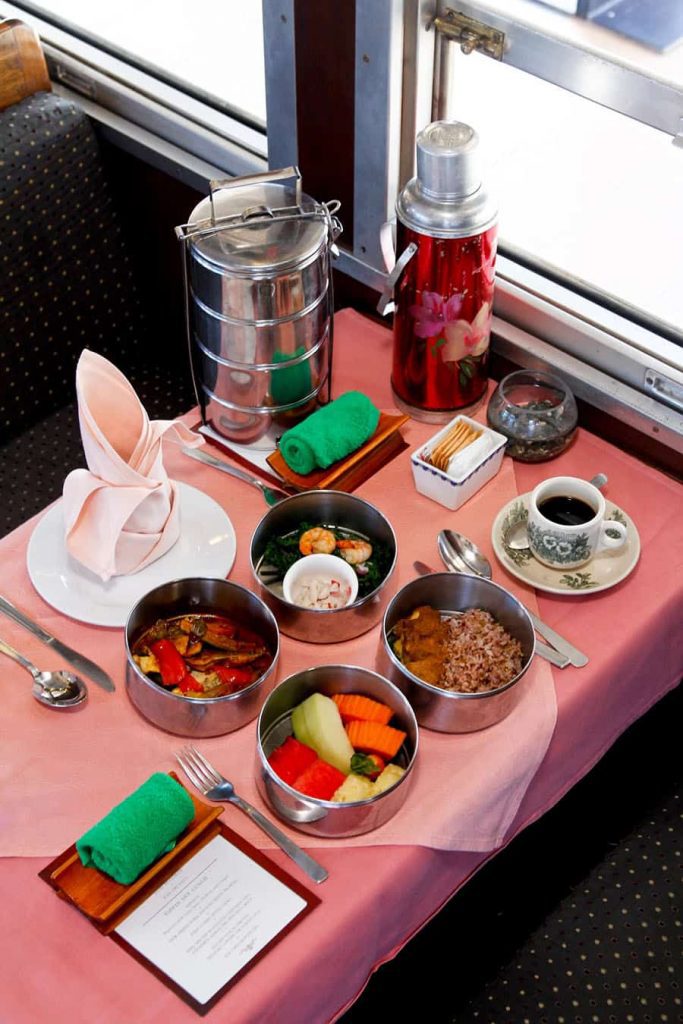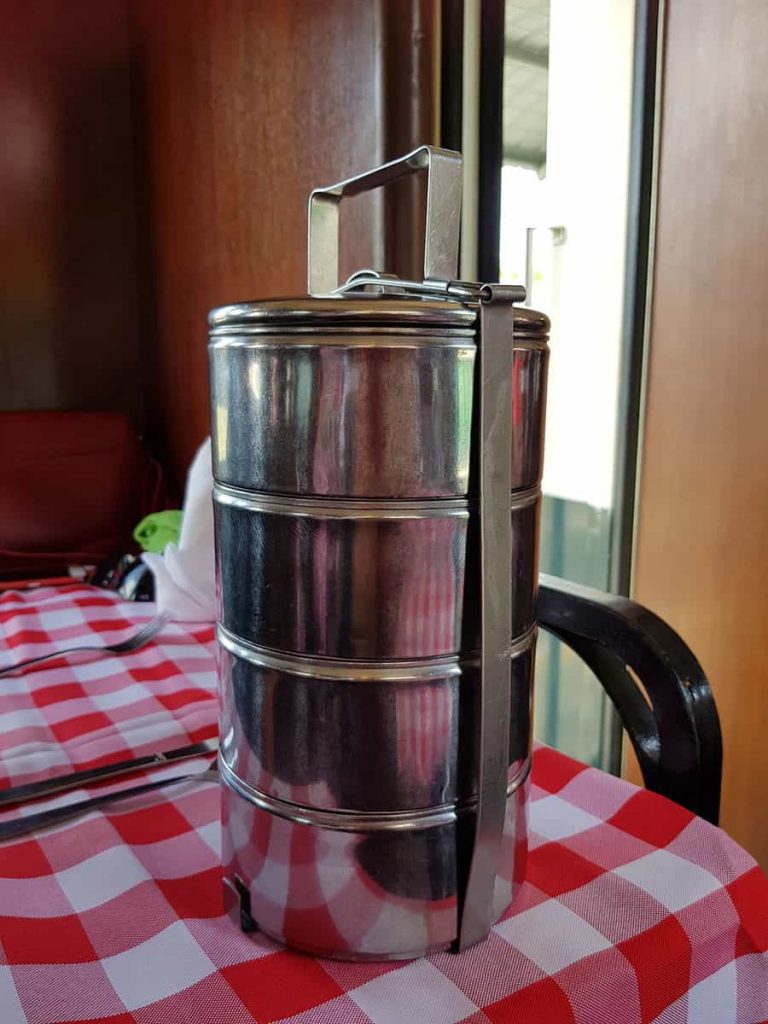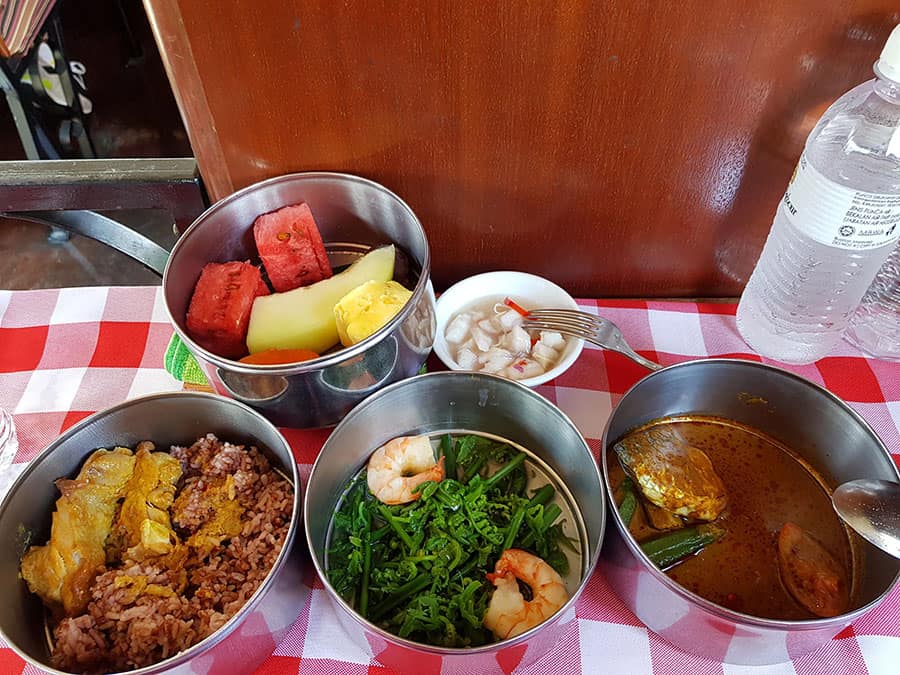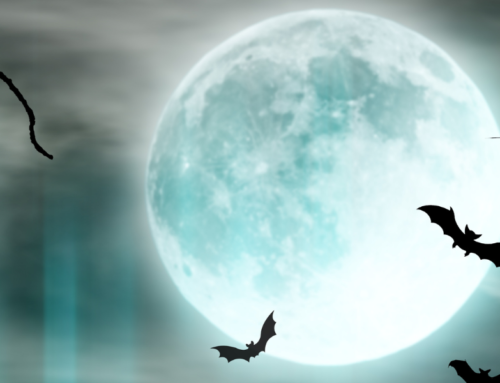Nostalgia on Board The Iron Buffalo
The smell of burning woods. Heat from the steam engine. Carriages of nostalgia. It’s like stepping into another era. Chugging away on the historical North Borneo Railway evokes a romance of bygone era.
The official North Borneo Railway was established on 1 August 1914. World wars and the Depression paralysed the system intermittently, then finally in 1971 steam locomotives were replaced by modern diesel trains. In 2000, the steam engines were resurrected as a historic tourist attraction.
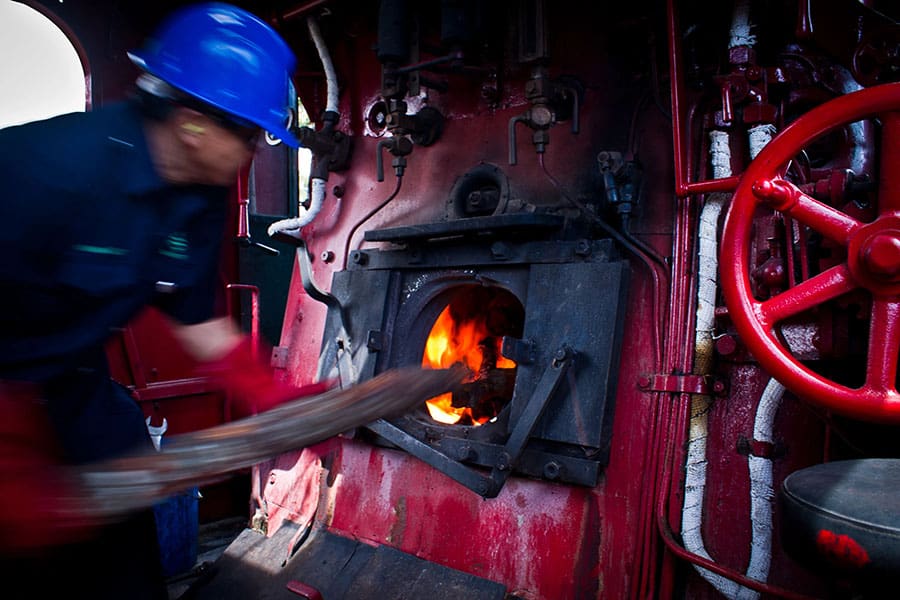
The engine used today is a British-built wood-burning Vulcan (supposedly more environmentally friendly than coal).
The five Japanese-designed carriages were built in the 1970s, and refurbished to recreate carriages typical of the 1900s featuring local woods from Sabah.
Each carriage has room for only 16 passengers, sitting facing each other with a wooden table in-between.
Seats are comfy upholstered benches with the North Borneo Railway logo attached on brass plaques and all are window seats as it is one passenger per bench.
Don’t worry if you are travelling backwards, as the train reverses for the return journey.
Large windows remain open for the full smokey experience, and breezy ceiling fans keep the carriage cool. Each carriage has a bathroom, and a British Pullman carriage functions as the kitchen car.
Everyone was able to watch the steam engine shunted and coupled with the carriages, which happened just prior to departure time.
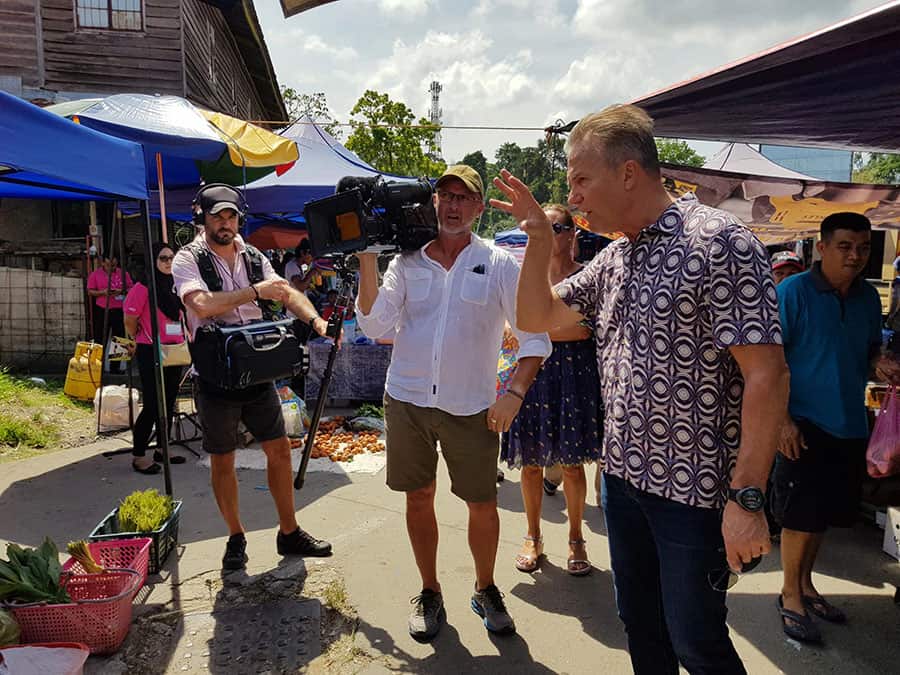
Recently, a group of Australian National TV crew, hopped on board the locomotive for an exclusive documentary which will be aired on Nine Network’s Getaway.
Hosted by famed Australian actor, musician, TV and radio presenter, David Reyne, the group of four people began their journey when they boarded the train at the Tanjung Aru train station.
With the blowing of the horns, the British Vulcan steam locomotive chugged away with everyone on-board excited for a great voyage.
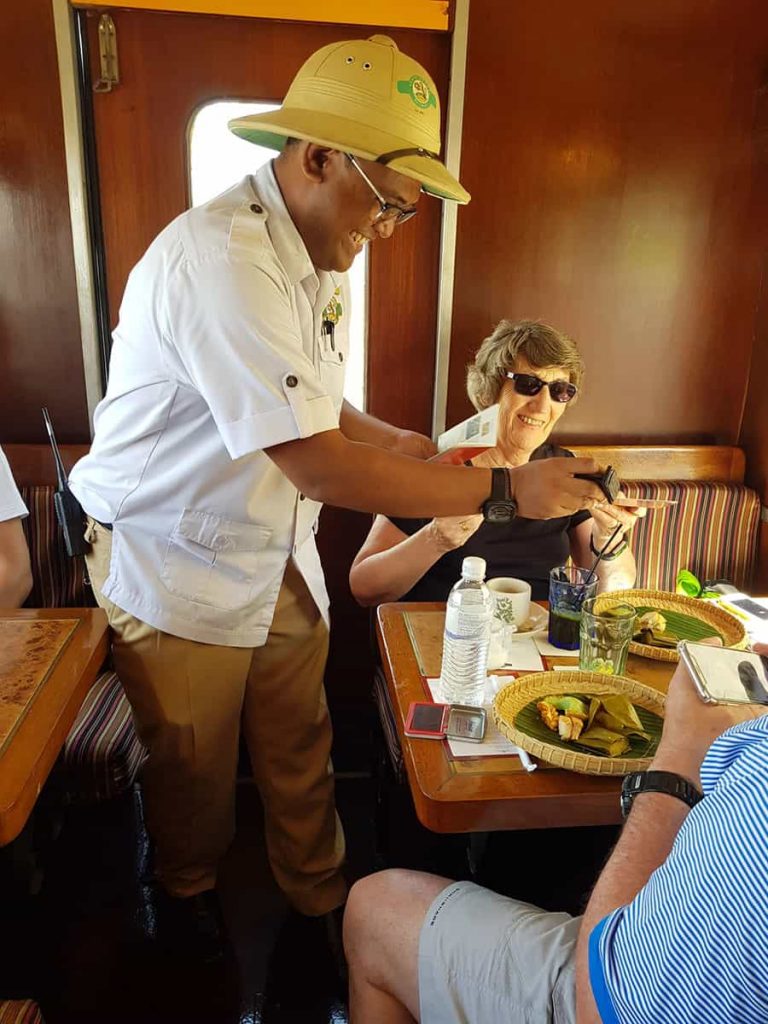
Once inside the carriages, everyone was greeted by well-appointed stewards, all friendly and ready to serve. They were then handed their ‘passports’. It’s a small booklet giving commuter a glimpse of what NBR is all about including the origin of the stunning locomotive.
As the train left the station, the passengers sat comfortably in their own personal benches, everyone was served iced lemon tea then breakfast of local Malay kuih and a choice of Sabah tea or Tenom coffee were served.
The selection of local treats including kaya toast (coconut jam) and kuih penjaram (rice flour and coconut milk cake) were presented on a banana leaf covered bamboo tray. Coffee and tea were served from metal thermoses in retro china cups.
As the antique beauty went further away into the suburban areas, village kids ran along the railway track, yelling in amusement and most of the passengers waved at them making the journey even more enjoyable.
There were two stops along the way. A 20-minute stop at Kinarut let passengers visit Tien Nam Shi Buddhist Temple or traditional local shops.
The local tamu is held every Saturday in Kinarut. David and crew went around the market before proceeding to the temple while most passengers opted to photograph the train and took a look at the fireman stoking the engine.
At the temple, the crew did a short narrative before swiftly boarding the train again. On return, cold towels and a bottle of cold water awaited.
Prior to the second stop, the train passed a 450-metre tunnel built in the early 1900s. Sweet smelling wood smoke filled the train for the few seconds of darkness.
The train crossed a steel trestle bridge over the Papar River, and stopped at Papar for 30-minute. The TV crew went on quickly around Papar filming every nook and corner of the small town then rushed back to the train station to film the reversing and coupling or the engine.
The engine was driven onto a section of track on a turntable and spun around in the reverse direction. Once attached, the front carriage became the last carriage.
Train announcements suggested it would be good for passengers to swap sides too, so they could have a different view.
Once back on the train, tables have been laid with tablecloths, and a set tiffin lunch was served.
The food was tip-top, and plentiful. The menu was local fare: hinava (raw mackerel marinated in lime juice), fern tips with prawns, fish curry, a spicy chicken curry, Sabah red hill rice, and a selection of seasonal fruit.
Food preferences are requested on booking, so vegetarians and allergy sufferers are catered for.
The best part about the whole journey was the new friendships formed among the passengers. A couple from Canada, Martin and Heather Harvey, both in their seventies, said the outing was very lovely and nostalgic and they would love to return someday.
Perhaps the bonus for the whole excursion was the outstanding service of the safari-suited, long-sock-wearing staff, the click-clack of the wheels, the toot-toot of the whistle and the smell of smoke. Without all these it just felt like riding a regular train.
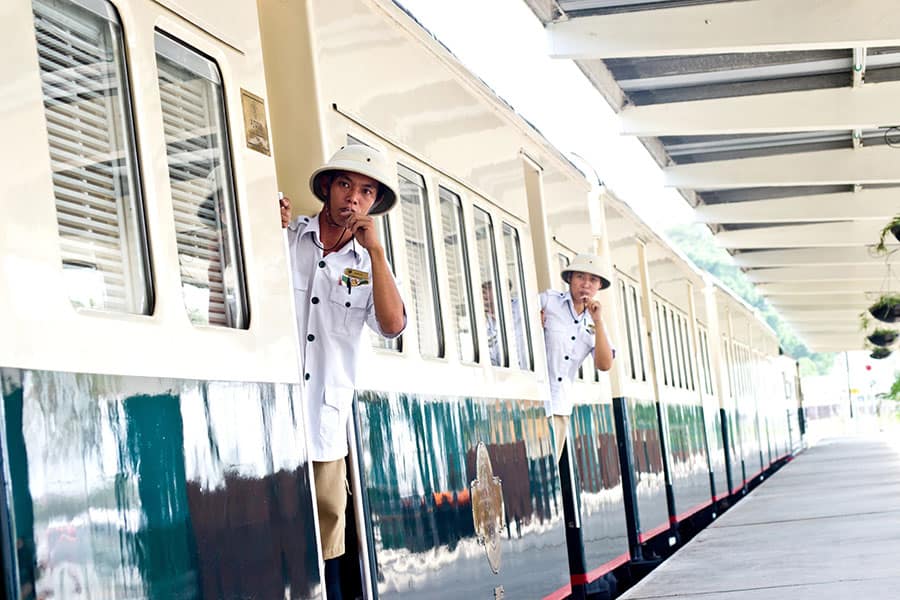
To experience this nostalgic train as well, make your reservations here.
Or call Tel : +60 88 308 500.

